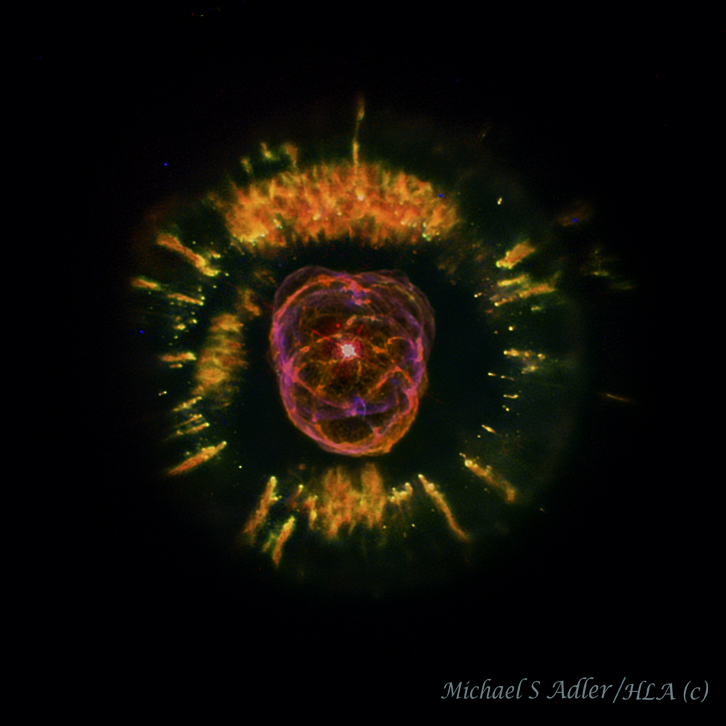Optics: Hubble Telescope
Mount: Hubble Telescope
Camera: Hubble Wide Field 2(WFPC2)
Filters: Sii(673nm), Nii(658nm), Hb(487nm)
Dates/Times: January 2000
Location:
Exposure: 1 hours
Acquisition:Downloaded raw FITS images for each filter from the Hubble Legacy Archive
Processing: Stretching done for each in MaximDl using Digital Development filter, created RGB image in PS2022 with Sii(673nm) in Red, Nii(658nm) in Green, Hb(487nm) in Blue. Color balance, brightening, sharpening, noise reduction were done in PS2022.
Eskimo Nebula, NGC 2392, Hubble Version
Original price was: $65.00.$52.50Current price is: $52.50.
Eskimo Nebula, NGC 2392 This nebula is called by some the Eskimo nebula because of the head shape surrounded by a parka. Others call it the Clown Face nebula. In 1787, astronomer William Herschel discovered this unusual planetary nebula: NGC 2392. In 2000 the Hubble Telescope imaged the nebula in 5 different wavelengths. The image made from three of these wavelengths shows gas clouds so complex they are not fully understood. NGC 2392 is a double-shelled planetary nebula, with the more distant gas having composed the outer layers of a dying Sun-like star only 10,000 years ago. A star like the Sun will first convert all of its Hydrogen into Helium and then will start another nuclear reaction converting Helium into Carbon. However, because of the star’s small size the gravitational force is not hot enough to heat the Carbon to start a third nuclear fusion sequence and the star becomes a white dwarf blowing off most of its left over material forming a nebula called a planetary nebula because of its circular shape. However, it is a misnomer as it has nothing to do with a planet. In the case of NGC 2392, the bright central region resembles a ball of twine, but in reality it is a bubble of material being blown into space by the central star’s intense “wind” of high-speed material. The 900,000-mile-per-hour winds are sweeping the material above and below the star, creating the elongated bubbles in the outer nebula ring. The bubbles are not smooth like balloons but have filaments of denser matter. These comet-shaped features may have formed from a collision of slow- and fast-moving gases. The NGC 2392 Nebula spans about 1/3 of a light year and lies in our Milky Way Galaxy, about 3,000 light years distant, toward the constellation of the Twins (Gemini). The image is a false color image using narrowband filters with the red color coming from Sulfur emission, the red coming from Nitrogen emission and blue coming from Hydrogen beta emission.


